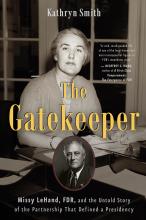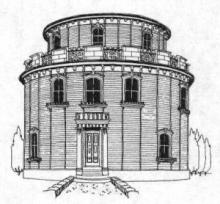We at the library recently created a Flickr page for sharing photos and images from our local history collection. So far, we've scanned and uploaded photos of Somerville kids dating back to the 1920s; the city's centennial celebration in 1972; Davis Square landmarks from the 1960s, before the Red Line; Somerville High School, and advertising from 19th- and 20th century Somerville businesses, like the Metropolitan Ice Company card featured with this post. We'll be adding more images regularly... Read Post
Local History

As National Women's History Month draws to a close this week, our spotlight is on Mae Durell Frazar (1852-1919) an accomplished writer, editor, world traveler, and entrepreneur who lived most of her life on or near Prospect Hill.
Frazar is chiefly known as Somerville’s first female publisher. In 1887 she created a 16-sheet paper called The Home Life, which was printed by the Somerville Journal, and "crammed with original matter, illustrated stories, prizes, premiums, music and book... Read Post

Would you believe that word-puzzle contests were so popular in the mid-20th century that many libraries had to put their dictionaries under lock and key? Puzzle-solvers devoured dictionaries, encyclopedias, and other reference works in pursuit of cash prizes, and deluged library staff with requests for answers to puzzle questions. They ripped pages from dictionaries and hid reference books to thwart other contestants’ chances.
In a recent browse of our local history room, we... Read Post

Blog by Kathryn Smith, author of The Gatekeeper: Missy LeHand, FDR and the Untold Story of the Partnership That Defined a Presidency.
Thanks, Cathy, for letting me be your guest blogger today.
Missy LeHand was one of Somerville’s most famous residents in the 1920s-1940s, when she was the private secretary of Franklin Delano Roosevelt. Especially during her White House years, 1933-1941, every visit to her family home at 101 Orchard Street generated an interview by the Boston... Read Post

Have you ever taken a stroll in Somerville, to come across an octagon shaped house with all the windows boarded up and cameras leering down at you? Well, if you know what I'm talking about, you've seen the Round House at 36 Atherton Street in Somerville. Although, it may not be as mysterious as we all think. The house was built by Enoch Robinson sometime around 1847, right after the locksmith and designer moved to Somerville. He lived in the house with his wife, three daughters, one son and... Read Post
One of SPL's most valuable resources for Somerville history is the Somerville Journal, the city's oldest newspaper. We have the complete run of the paper in hard copy and microfilm from the 1870s to the present. Reading old issues is fascinating. Not only do they give a sense of how important newspapers were for news and entertainment before competition from radio, television and the Internet, they also reveal the issues that were on people's minds that seldom make it into the history books... Read Post
By the reference desk in the Central Library is a statue of an Ancient Greek boxer known to history as Damoxenos.
However, for as long anyone can remember he's been known around Somerville as Clarence. And like all Ancient Greek athletes depicted in sculpture, Clarence isn't wearing anything.
A few days ago a woman who was clearly in a hurry came into the main reading room with two small children. One of them, a boy who looked about five or six, pointed to Clarence and asked... Read Post
Somerville Public Library’s central branch is marking its centennial this year. Way back in January of 1914, the Italian Renaissance-style building at 79 Highland Avenue opened for patrons after its dedication on Dec. 17, 1913.
Famed library architect Edward Lippincott Tilton designed the new building. According to the Somerville Journal in an article dated Dec. 12, 1913, the library was constructed at a cost of $125,000 (which is $2,993,333 in today’s dollars). Great library... Read Post
Visitors to the Central Library often comment on the frieze in the main reading room that runs along the perimeter of the room just below the ceiling.
It's a partial reproduction of the friezes on the Parthenon, one of the finest surviving buildings of Classical Greece and a symbol of Western civilization. Ever since this building opened a century ago, library staff have been telling anyone who asks that the frieze depicts the Panathenaic Procession, which concluded the annual... Read Post

It's official: Whitey Bulger has been found guilty - of a whole lot of stuff - and will presumably be spending the rest of his life behind bars. Many of us would like to forget all about the notorious thug but, human nature being what it is, a fair number of us want to know all there is to know about Whitey and his doings. To that end, here's a list of relevant books available through the Minuteman Library Network.
Whitey: the Life of America's Most Notorious Mob Boss by Dick Lehr... Read Post

Here at the Central Library’s reference desk we have a companion – a statue of a Greek boxer who, in accordance with long-standing Library tradition, we call Clarence. Clarence is actually Damoxenus, and he has an interesting history.
“Damoxenus. A boxer of Syracuse, excluded from the Nemean Games for killing his opponent in a pugilistic encounter. The name of the latter was Creugas; and the two... Read Post

